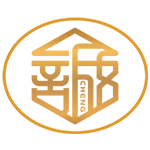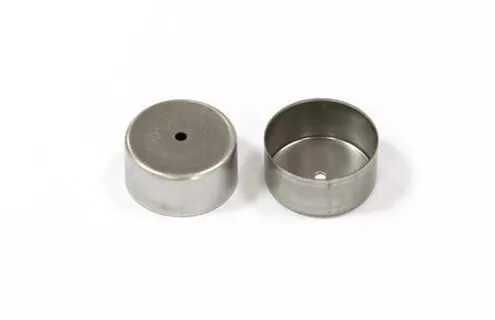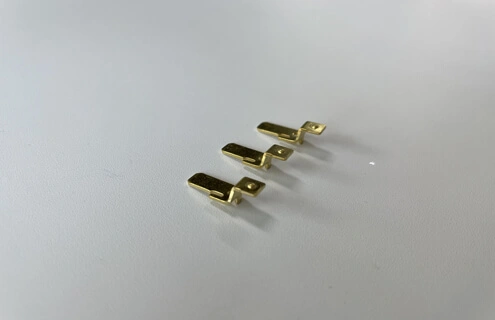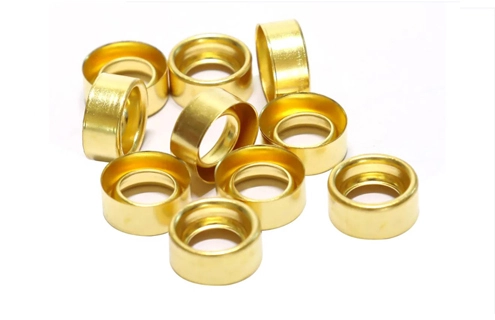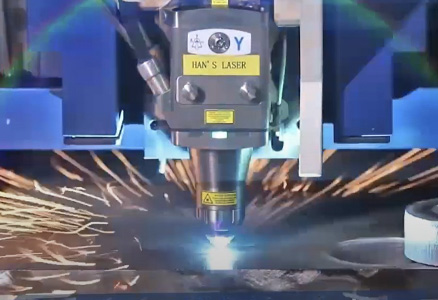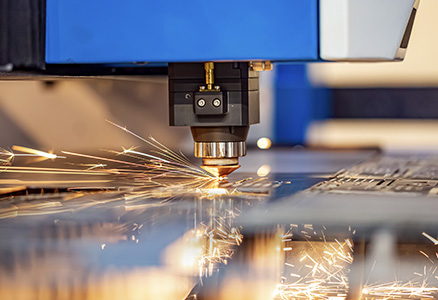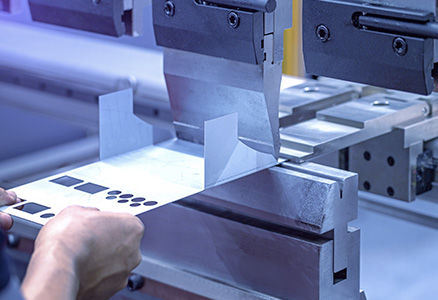Sheet and plate metal are metal alloys used in many industries. You will find them in everyday items like kitchenware as well as in aircraft and electronics. But they are often wrongly considered the same. Many people think that sheet metal and plate metal are the same thing. However, they are quite different from each other, namely in terms of their thickness (gauge).
The difference in their thickness allows them to be used in different manufacturing processes. This article will cover everything you need to know about them and their applications.
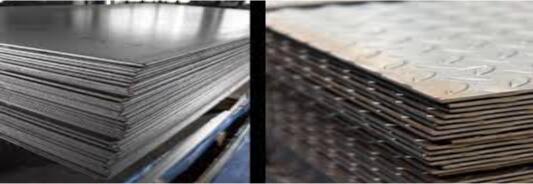
What are Sheet Metal and Plate Metal?
Sheet Metal | Plate Metal |
Sheet metal is metal rolled until it is thin and flat, which gives it its strength and lightness. Typically, it is available in flat sheets or coiled strips. Different metals can be turned into sheet metals, such as steel, brass, aluminum, copper, etc. The deep drawing aluminum and deep drawing brass are common processes used to form sheet metal into various shapes. | Plate metal is thicker than sheet metal and comes in various finishes such as galvanised sheet metal, anti-slip, pickle and oiled, rough hot rolls, diamond-patterned, etc.
|
How Plate and Sheet Metal Are Made
Though they are different, they go through a similar process when it comes to production.
Melting and Pouring
The metal of choice, e.g., copper, is melted in a furnace. This molten metal is then cast into slabs, known as ingot. This ingot is the piece that will be made into either sheets or plates.
Rolling
After melting and pouring, the ingot becomes a slab that is generally 4” or more, which is considered to be too thick for both sheets and metals. To reduce the thickness, the ingot is then passed through rollers that squeeze it until the thickness is reduced to the correct amount. This roll can be either hot or cold, depending on the business objective. Here is an overview of them both:
Hot rolling: It is considered hot rolling if the temperature is above recrystalisation. This also results in thicker sheets, up to around 3mm. It is ideal if you want the metal to withstand bending, forging, and extrusions, making it suitable for use in construction and plumbing. It is also cost-effective.
Cold rolling: It refers to rolling the metal at room temperature. This gives it more strength, a smoother body, and more accurate dimensions. However, you need stronger machines for this to work, making it not as cost-effective.
After your metal has been rolled, it is ready to be used for the desired product.

The Difference
Sheet metal is thinner than plate metal. This thickness, or gauge, as it is referred to in some places like the USA, should be less than 6 mm or from 30 gauge to 7 gauge, which is thicker than metal foil. If the thickness or gauge exceeds this limitation, it is considered a plate metal. So, sheet metal is thicker than metal foil but thinner than metal plates.
It is necessary to mention that the value of the gauge does not represent the actual value in inches or millimeters. It is independent of those measurements. For example, a 16 gauge aluminum sheet metal is 0.05082 inches or 1.291 mm, and this changes depending on the type of sheet metal. So, for a 16 gauge brass sheet metal, the inch and mm change drastically (0.065 inches and 1.651 mm).
Furthermore, the greater the gauge number, the thinner the rolled metal is. So, an 18 gauge sheet metal is thicker than a 16 gauge one.
Here is an overview for you
Sheet Metal | Plate Metal |
| Thicker than 6mm. More expensive.
|

Where They Are Used
Sheet Metal | Plate Metal |
Sheet metal provides strength and flexibility, making it perfect for the manufacture of products such as metal buckets, cookware, and furniture. It's also used for custom precision metal stamping for medical devices and custom stamped components in various industries.
They are also used in the construction industry for metal roofing sheets and siding. You will even find sheet metal in the foundation of your cars. There are also decorative metal sheets for walls.
| Plate metal is more durable and, therefore, used for making heavy machinery, railway tracks, pipelines made for oil and gas, and vehicles to withstand high impacts. It's also ideal for compound stamping applications that require thicker materials.
Plate metal offers more strength, so it is also used in tanks and other military equipment. |
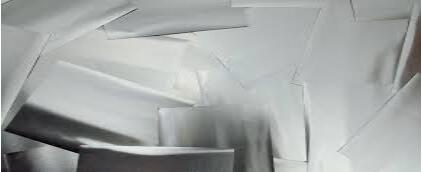
Sheet Metal Vs Plate Metal - Which One Should You Use?
The answer to this question depends on your needs. Though both are similar and last longer than other alternatives (like plastic sheets), they offer different advantages. In the competition of sheet metal vs plate metal, sheet metal wins in flexibility and lightweightedness. If they are what you are looking for, then sheet metal is the right choice.
However, if you want more strength and hardness, then plate metal is right for you.
The right metal also depends on what you are producing. For example, storage tanks for gases and liquids are made with plate metal due to their ability to handle pressure, which it can be due to the metal’s thickness. On the other hand, sheet metal’s lightness makes it perfect for electronics casings.
The last factor is to look for cost. Sheet metals are easier to produce and require less metal. Therefore, they are cheaper, but plate metal is more expensive because of the more costly manufacturing process due to the thickness.
Conclusion
The difference between sheet metal and plate metal is based on the thickness, which allows the flat metal to be used in various industries for different purposes. Both sheet and plate metal come with different advantages and disadvantages. Overall, you must choose which one is the right one for you.
FAQs
What is the difference between sheet and plate and foil?
Metal foils are only 0.2 millimeters. Meanwhile, sheet metal is less than 6mm. It is thicker than metal foils but thinner than plate metals, which are more than 6mm.
What is the difference between plate, sheet, and strip?
A strip is long and narrow. Meanwhile, sheet metal is flatter and bigger in both length and width. Plate metal is like sheet metal, but it is thicker. Three of them have different uses.
How to bend sheet metal?
Sheet metal can be bent using different methods depending on the thickness and type of metal. For thinner sheets, you can use hand tools such as pliers or a sheet metal brake. For thicker sheets, you may need to use more advanced tools like hydraulic press brakes or rollers.
